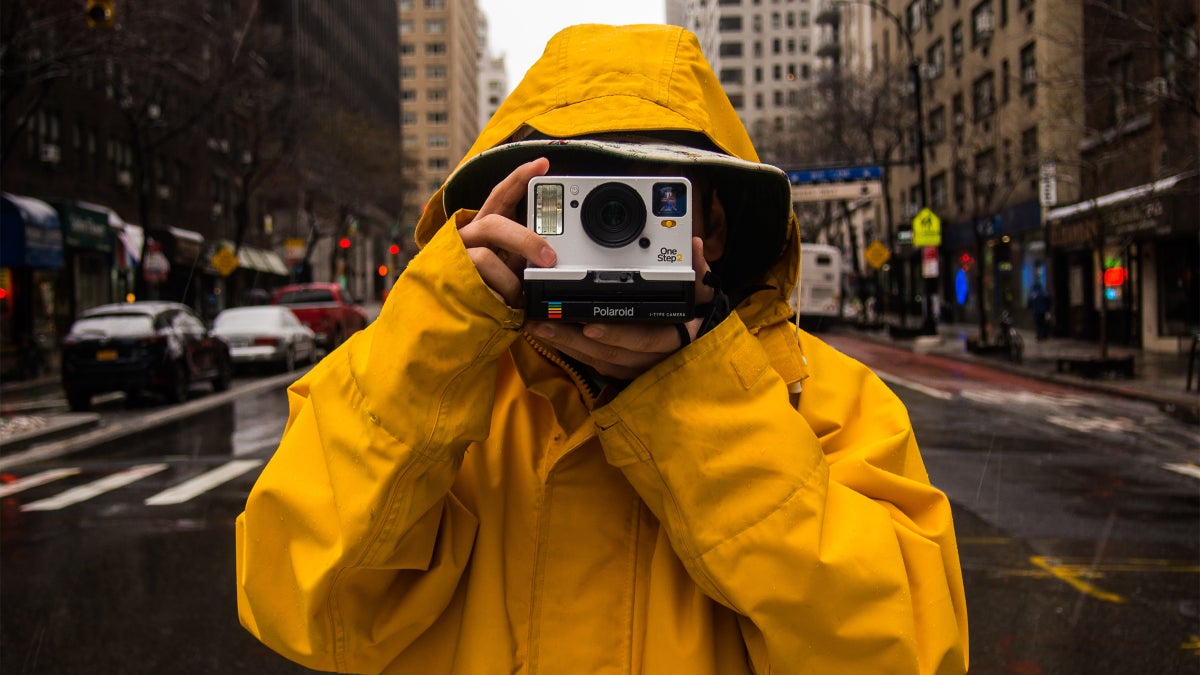No products in the cart.
Outdoor Adventure
These Are the Best Instant-Film Cameras
The past 20 years have been a roller coaster for instant photography. In 2008, Polaroid announced it would stop producing its iconic instant film, following a series of bankruptcies and factory closures. Many worried it was the end of an era. Digital photography had weakened the titan, and there didn’t appear to be any other companies poised to take its place. (Polaroid’s extensive instant-film and -camera patents stunted what other brands like Fujifilm and Kodak could engineer and produce.) As the century’s first decade came to a close and smartphones began to enter the scene, the market for instant cameras looked anything but promising.
But behind the scenes, Polaroid’s collapse opened up opportunities. With the patents expired, Fujifilm and Kodak quickly made up for lost time.Throughout the 2010s, they brought new instant cameras and films to market. Simultaneously, analog camera aficionados in Europe hustled to save Polaroid’s film technology. In 2009, a group in the Netherlands called the Impossible Project bought the last-standing Polaroid factory and began producing film and cameras (and last year they reinstated the Polaroid name). Meanwhile, the Austria-based Lomographic Society International sustained old Soviet instant-camera technologies all the while inventing new cameras and films.
Now, with millennial and Gen Z creatives drawn to its vintage appeal and tactile value, the rebound is reaching new heights. Digital smartphone photography presents a paradox—an endless scroll of images that exist everywhere yet nowhere. Polaroids, which are meant to be held and smelled and shared, can be an antidote.
They also present a very low barrier to entry. Compared to other film cameras, instant models are cheap and easy to use. They’re also typically more durable. “Polaroids aren’t as fragile as normal cameras,” says Rosalie Anderson, an analog photographer based in Austin, Texas. And with the ability to share physical photos on the spot, they help build community. “I fell in love with being able to carry mine around everywhere and having photos not only for myself but to give as moments to people.”
With more instant cameras available than ever before, we tested a variety of new models to determine what works best for traveling, camping, and general adventuring.
Most Iconic
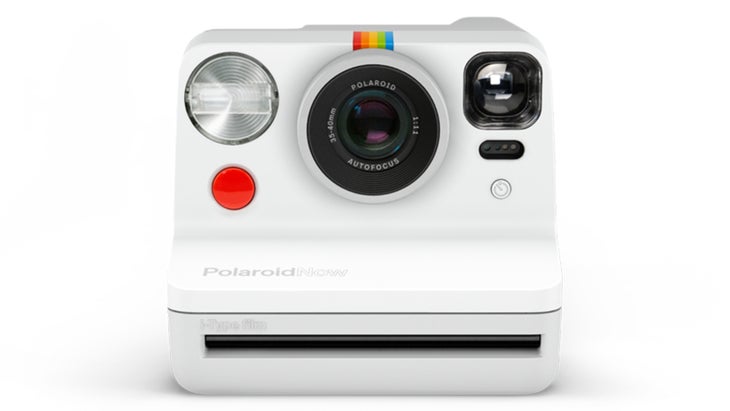
Polaroid Now ($100)
If nostalgia is what you’re after, the Polaroid Now delivers. This is the latest in the evolution of Polaroid’s original OneStep cameras: a boxy frame and bottom-feeding film slot, evoking the fun-and-flirty vibes first made famous in the seventies. Once printed, the Now’s photos deliver warm, soft hues that feel timeless. Upgrades include an autofocus feature that chooses between two lenses according to the subject and light conditions, plus a nine-second self-timer button. Batteries are USB rechargeable. Compatible with i-Type and 600 film.
Most Sophisticated
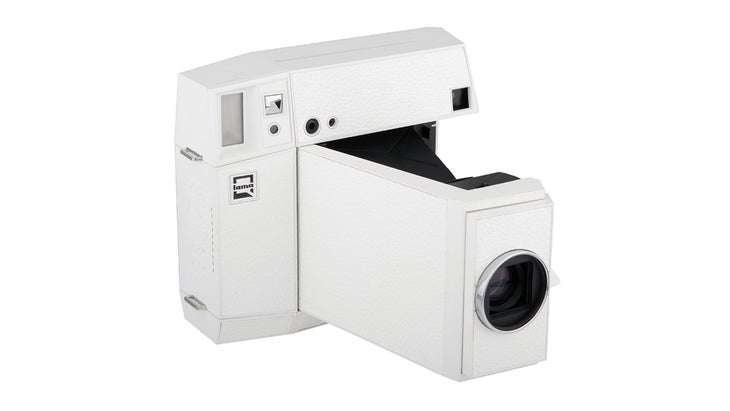
Lomo’Instant Square Glass ($100)
Unlike other instant cameras, this Lomography photo maker is built with glass lenses, yielding pics with comparatively sharp definition. A blend of manual and automatic settings enhance creative control. Click on auto mode and the camera will adjust shutter speed, aperture, and flash output for you, ensuring that every shot is properly exposed. Or manipulate the exposure yourself. Selfies and group photos can be staged via the included remote control. The camera is the size of a PB&J sandwich when folded and takes CR2 batteries (not included). Compatible with Fujifilm Instax Square film.
Most Packable
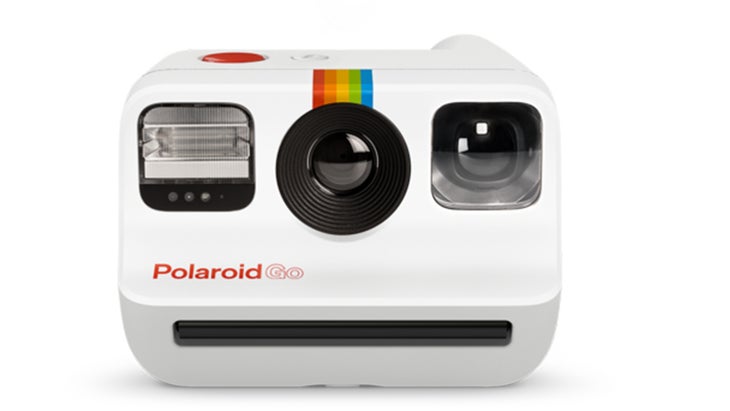
Polaroid Go ($100)
Never underestimate the small fry. In 2021, Polaroid introduced its tiniest and lightest camera yet, the Polaroid Go, which spits out mini square photos no bigger than a matchbox. The Go is about the size of a pear and weighs half a pound without a film pack—small and light enough to fit in most bags or jacket pockets. We tossed it in the glove box during a weekend road trip and carried it onto an airplane. The photos are like tiny versions of a classic Polaroid, with the same iconic warm hues and softness. Batteries are USB rechargeable, and each charge lasts for 15 packs of film. Compatible only with Polaroid Go film.
Most Versatile
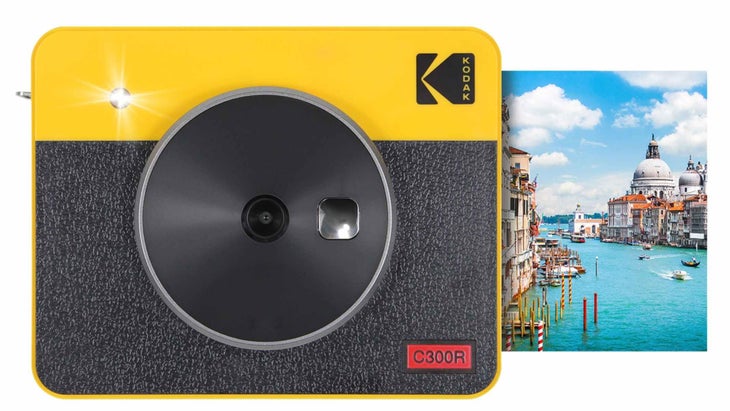
Kodak Mini Shot 3 Retro ($155)
Why choose between a camera and a printer when you can have both? The Kodak Mini Shot 3 Retro functions as an instant camera—point and shoot, and a photo prints out. But it also doubles as a printer for your smartphone shots. Connect via the Kodak Instant app, and print straight from your digital photo gallery. When shooting from the camera, a small LCD viewfinder allows you to preview your snaps before printing, and you have the option of printing with or without a white border. The results are sharp and vibrant. Recharge via a USB. Compatible only with a Kodak Instant Print 3×3 cartridge.
Best for Selfies
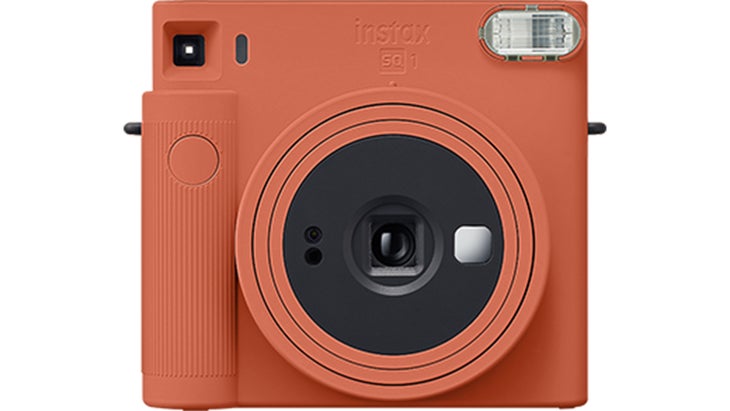
Fujifilm Instax Square SQ1 ($100)
The Instax Square SQ1 is among the easiest instant cameras to operate. Turn it on and toggle between two focus ranges (regular and close-up) by rotating the ring around the lens. Even better, a reflective selfie mirror positioned next to the lens makes it possible to perfectly frame your shot, so you don’t wind up with cropped faces or missing smiles. Photos eject from atop the camera and develop with cool, blue tones—great for shooting outside. Its two CR2 batteries (included) last about 30 packs of film. Compatible only with Fujifilm Instax Square film.
Best Wide Shot

Lomo’Instant Wide Camera ($150)
In 2015, the Lomography team launched the Lomo’Instant Wide Camera, a descendant of an old Soviet camera model. It prints on rectangular 4.2-by-3.3-inch film sheets (exactly twice as wide as the Instax Mini film). With three easy-to-adjust focusing distances, this camera can capture close-up portraits of friends hanging around the campfire, medium-range objects between three and six feet away, and long-range landscape photos with equal finesse. An included remote control helps facilitate selfies and group photos. Nearly eight inches wide and weighing just under two pounds, this was the biggest and heaviest among the cameras we tested. It takes AA batteries (not included). Compatible with Fujifilm Instax Wide film.
Source link

